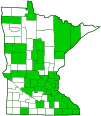lance-leaf coreopsis
(Coreopsis lanceolata)
Conservation • Wetland • Description • Habitat • Ecology • Use • Distribution • Taxonomy
Description |
||
Lance-leaf coreopsis is a showy summer wildflower. It is native to eastern Canada and most of the eastern half of the United States, west to Wisconsin and eastern Texas. It was introduced in Europe, eastern Asia, South America, South Africa, Australia, and New Zealand. It is considered invasive in Japan and eastern Australia. In the United States it is widely cultivated as a garden ornamental, and is sometimes planted on roadsides. It was introduced but is not yet well established (adventive) in Minnesota. It is found in prairies, meadows, and disturbed areas. It grows under full sun in dry to moderately moist sandy soil Lance-leaf coreopsis is a perennial forb that rises on a tuft of basal leaves and multiple flowering stems from a short, underground, horizontal stem (rhizome). It often forms clumps. Plants that have not been cultivated are 8″ to 24″ (10 to 60 cm) tall. Cultivated plants can be up to 36″ (91 cm) tall. The hairiness of the plant is highly variable, even within the same plant. Basal leaves are 2″ to 4¾″ (5 to 12 cm) long, and 5⁄16″ to ⅝″ (8 to 15 mm) wide or slightly wider. They are on ⅜″ to 2″ (1 to 5 cm) long or longer leaf stalks (petioles). The leaf blades are narrowly lance-shaped or lance egg-shaped. They are narrowed toward the base and taper to a usually sharp point at the tip. The blades are sometimes divided into 2 to 5 pinnate lobes or divisions. When divided, the terminal lobe or division is much longer than the lateral ones. The upper and lower surfaces may be hairless or sparsely to moderately covered with short, white, spreading hairs. The margins are untoothed. The stems are erect, branched or unbranched, and hairless or sparsely to moderately covered with spreading hairs. Stem leaves are opposite and are clustered on the lower one-third to one-half of the stem. On non-cultivated plants there are usually just 1 to 3 nodes, rarely up to 5 nodes. Cultivated plants may have more nodes. Lower stem leaves are on long petioles and are similar to basal leaves. The leaves become smaller, shorter stalked, and less divided as they ascend the stem. The inflorescence is usually a solitary, showy flower head on a long stalk (peduncle) at the end of the stem and branches. The peduncles are leafless and usually 4¾″ to 8″ (12 to 20 cm) long, sometimes up to 13¾″ (35 cm) long. Each flower head is 2″ to 3″ (5 to 8 cm) in diameter and consists of a dense cluster of 60 to 150 or more tiny, fertile, disc florets surrounded by several large spreading, sterile, ray florets. Non-cultivated plants have just 8 ray florets. Cultivated plants have more ray florets, often twice that number. At the base of the flower head there are two widely spreading series of modified leaves (bracts), each with 8 bracts. Outer bracts (calyculi) are green, lance egg-shaped to lance-linear, and 3 ⁄16″ to ⅜″ (5 to 10 mm) long. Inner bracts (phyllaries) are yellowish-green to yellowish-brown, triangular or triangular lance-shaped, and ⅜″ to ½″ (6 to 12 mm) long. Ray florets are entirely yellow, are ⅝″ to 1 3⁄16″ (15 to 30 mm) long, and have 3 to 5 deep lobes or teeth at the tip. Disc florets are entirely yellow, five-lobed, and ¼″ to 5⁄16″ (6 to 7.5 mm) long. The fruit is a dry, ⅛″ (3 to 4 mm) long seed capsule (cypsela) with conspicuous spreading wings on the margins. |
||
Height |
||
8″ to 24″ (10 to 60 cm) |
||
Flower Color |
||
Yellow |
||
Similar Species |
||
Habitat |
||
Dry to moderate moisture. Prairies, meadows, and disturbed areas. Full sun. Sandy soil. |
||
Ecology |
||
Flowering |
||
May to August |
||
Pests and Diseases |
||
|
||
Use |
||
Garden ornamental, landscape beautification |
||
Distribution |
||||
|
Sources |
|||
| 8/23/2023 | ||||
Nativity |
||||
Native in the eastern United States west to Wisconsin. Adventive in Minnesota. |
||||
Occurrence |
||||
Uncommon in Minnesota |
||||
Taxonomy |
|||
| Kingdom | Plantae (Plants) | ||
| Division | Tracheophyta (Vascular Plants) | ||
| Subdivision | Spermatophytina (Seed Plants) | ||
| Class | Magnoliopsida (Dicots) | ||
Order |
Asterales (Sunflowers, Bellflowers, Fanflowers, and Allies) | ||
Family |
Asteraceae (Sunflowers, Daisies, Asters, and Allies) | ||
| Subfamily | Asteroideae | ||
| Supertribe | Helianthodae | ||
| Tribe | Coreopsideae (coreopsis and allies) | ||
| Genus | Coreopsis (tickseed) | ||
| Section | Coreopsis | ||
Subordinate Taxa |
|||
One variety, Coreopsis lanceolata var. villosa, has been described, based on the number and length of aerial internodes below the inflorescence. It has been suggested that this may be a hybrid between C. lanceolata and C. pubescens. Other varieties have been described based on leaf dissection and pubescence. However, the hairiness is highly variable, even on the same plant. None of the varieties have been widely accepted. |
|||
Synonyms |
|||
Coreopsis crassifolia Coreopsis heterogyna Coreopsis lanceolata var. villosa |
|||
Common Names |
|||
garden coreopsis lance coreopsis lance-leaf coreopsis lanceleaf tickseed lance-leaf tickseed lance-leaved coreopsis long-stalk tickseed sand coreopsis sand tickseed |
|||
Glossary
Bract
Modified leaf at the base of a flower stalk, flower cluster, or inflorescence.
Cypsela
A dry, one-chambered, single-seeded seed capsule, formed from a single carpel, with the seed attached to the membranous outer layer (wall) only by the seed stalk; the wall, formed from the wall of the inferior ovary and also from other tissues derived from the receptacle or hypanthium, does not split open at maturity, but relies on decay or predation to release the contents.
Involucre
A whorl of bracts beneath or surrounding a flower, flower head, or flower cluster.
Linear
Long, straight, and narrow, with more or less parallel sides, like a blade of grass.
Node
The small swelling of the stem from which one or more leaves, branches, or buds originate.
Petiole
On plants: The stalk of a leaf blade or a compound leaf that attaches it to the stem. On ants and wasps: The constricted first one or two segments of the rear part of the body.
Peduncle
In angiosperms, the stalk of a single flower or a flower cluster; in club mosses, the stalk of a strobilus or a group of strobili.
Phyllary
An individual bract within the involucre of a plant in the Asteraceae family.
Pinnate
On a compound leaf, having the leaflets arranged on opposite sides of a common stalk. On a bryophyte, having branches evenly arranged on opposite sides of a stem.
Wing
A thin, flat, membranous, usually transparent appendage on the margin of a structure.
Visitor Photos |
|||||
Share your photo of this plant. |
|||||
| This button not working for you? Simply email us at info@MinnesotaSeasons.com. Attach one or more photos and, if you like, a caption. |
|||||
Luciearl |
|||||
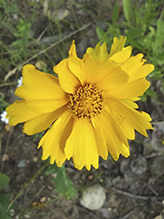 |
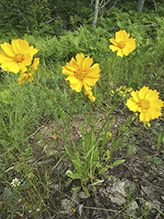 |
||||
MinnesotaSeasons.com Photos |
|||||
Plant |
|||||
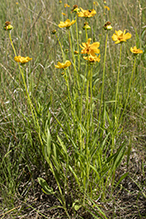 |
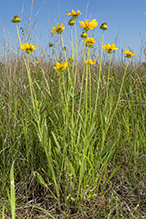 |
||||
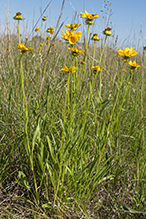 |
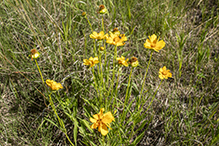 |
||||
Flower head |
|||||
 |
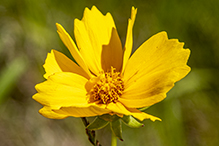 |
||||
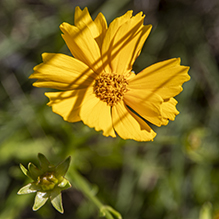 |
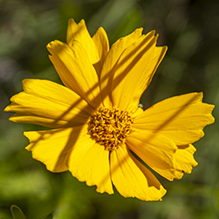 |
||||
Receptacle |
|||||
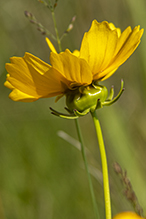 |
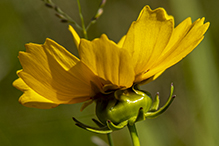 |
||||
Leaves |
|||||
 |
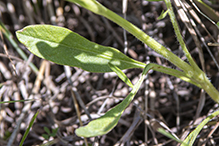 |
||||
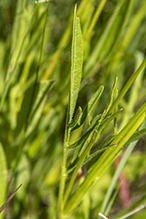 |
|||||
Infructescence |
|||||
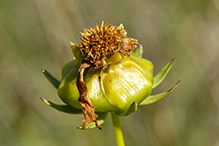 |
|||||

Slideshows |
||

Visitor Videos |
|||
Share your video of this plant. |
|||
| This button not working for you? Simply email us at info@MinnesotaSeasons.com. Attach a video, a YouTube link, or a cloud storage link. |
|||
Other Videos |
|||
| Coreopsis Lanceolata Where Flowers Bloom |
|||
About
Jun 30, 2022 Coreopsis lanceolata, commonly known as the lance-leaved coreopsis, is a North American species of tickseed belonging to the family Asteraceae. |
|||
| Coreopsis lanceolata SadCitizen |
|||
About
Jan 1, 2021 Coreopsis lanceolata is a late spring/early summer wildflower that is found in all but eight states in the United States. The plant grows to approximately three feet tall. |
|||
| Plant Of The Week: Lanceleaf Coreopsis (Coreopsis lanceolata) Garden With Sufian |
|||
About
Jul 4, 2022 Sorry for the delay, but here is another plant of the week finally! This is Lanceleaf coreopsis, a native perennial that tends to grow in sunny areas with poor dry soil. It begins blooming in June and continues on throughout most of the growing season. |
|||

Visitor Sightings |
|||||
Report a sighting of this plant. |
|||||
| This button not working for you? Simply email us at info@MinnesotaSeasons.com. Be sure to include a location. |
|||||
| Luciearl 6/28/2022 |
Location: Faiview Twp, Cass County |
||||
MinnesotaSeasons.com Sightings |
|||||

Created: 7/15/2022
Last Updated:
